|

Fresh off the plane, the first thing I noticed in the airport vending machine
was a snack called, “Taccos.” Carmel asked Tourist Information if Taccos
were any good, but they stared blankly at us trying to figure why this
question didn’t match any of the usual tourist questions.

Our trusty touristy map.

Linking up with my Budapest
friend, Éva.

St. Stephen’s Basilica.

St. Stephen’s gross preserved hand. Apparently, when they dug up St..
Stephen’s grave, his body had completely decomposed as normal, but his
hand was perfectly preserved. They extracted it and put it on display.

That big dome originally fell down during construction.

Walking the empty market halls of Budapest
(it was a holiday that day so the streets were ours alone).

This café was where the revolution “started” against
Austrian rule.
 
Crossing the blue Danube on the green
bridge.

You think churches all look the same until you come across one that is built
in a cave.

Needless to say, the cave church is not big.

This marks the top of the hill with the best view of the city.

Well-protected. Though not necessarily well-manned, as the gun closest to me
is being operated by 4 children.

View from the hill. What we’re looking at here is Pest
as seen from Buda. You can figure out the name Budapest from here.

Now we’re in Buda
Castle.

The hill where we were as seen from Buda Castle.

Entering the grounds.

This is the founder of Budapest
or something like that.

Carmel under
Karmelita Udvar.

This building is a reminder of Hungary’s recent war-torn
past, as it still contains the damage from being shelled in the wars.

Close-up of artillery damage.
 
Colorful rooftops.

Another founder or king or something of Budapest.

Pretty café.
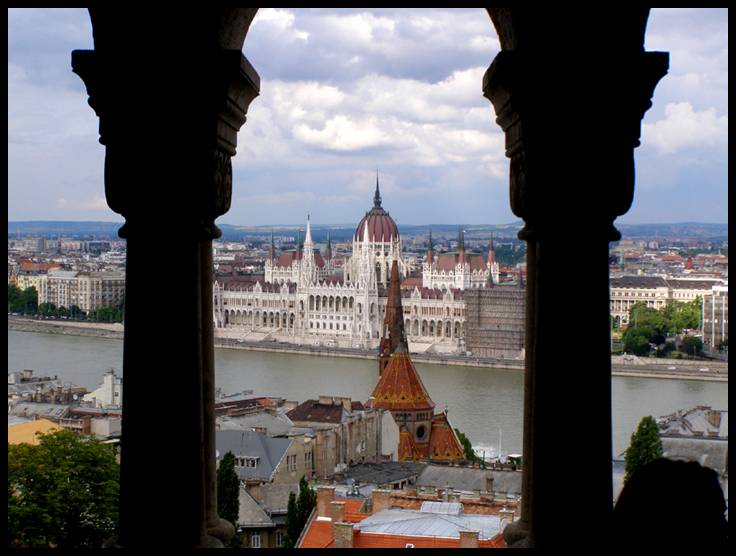
Parliament, as seen from the café.
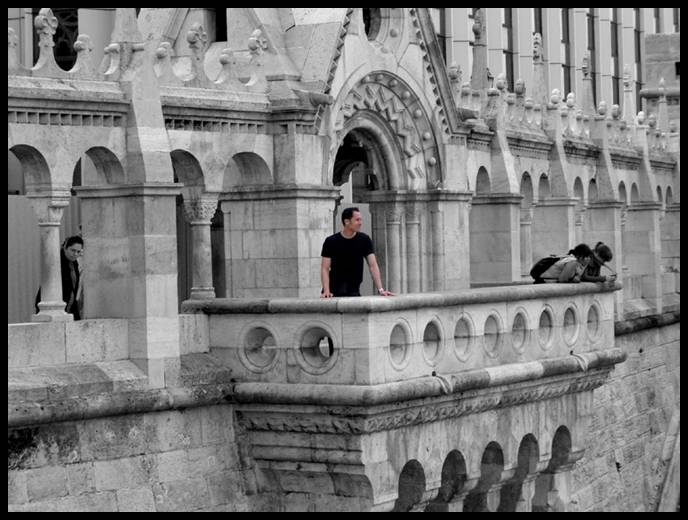
Checkin’ out the view.

Hi Carmel!

3 wise men and a tourist. The tourist is the one in the middle holding the
giant spoon, obviously.

Supposedly the architect of this bridge finished the bridge, then built a
couple of lions to cap it off. But, then he forgot to give the lions tongues
and was so ashamed that he gouged out his eyes or chopped off his arms or
killed himself or something drastically over-reactionary, I can’t
remember what exactly.
 
Hmm, I don’t know. I think that bump in between the two bottom teeth
could pass as a tongue.

Vörösmarty, who apparently was a giant. I was into
Vörösmarty because a paper I cite all the time is by a guy named
Vörösmarty.

Beautiful art.
 
We stopped for Hungarian wine (really good!) and grappa-like liquor, as well
as bread covered in lard. Also shown here is Éva’s bf, who is an
architect and source of lots of interesting architectural info as he walked
around the city with us.

What else can you get in Budapest
restaurants? I’ll take the Cold cucumber soup, extra lovage please.

We checked out the grand market.

Lots of yummy things being constructed.

Russian stackable dolls of famous people. Obama is next to Bin Ladin and two
over from Elvis.

Mmm, fried dough with stuff.

I got mine with creamy garlic, mushrooms and topped with a
heart-attack’s supply of cheese.
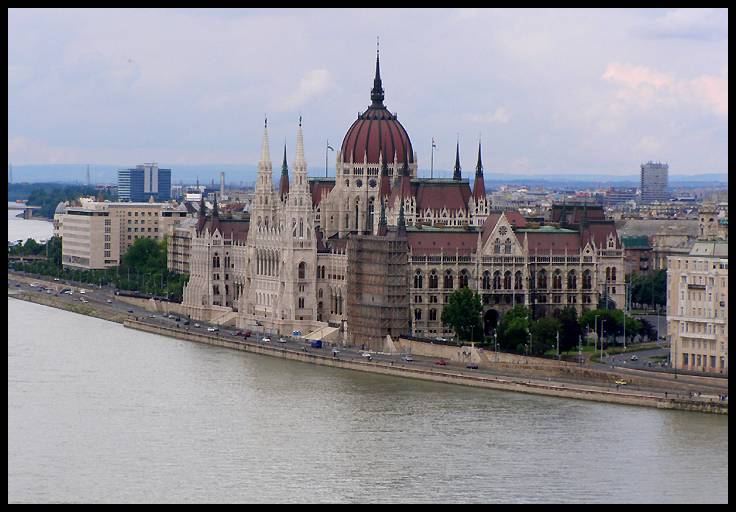
We visited the Parliament, which is the jewel of the city.

Really poor Parliament pano.

Grand entry to Parliament.

Ceiling.
 
Carmel and
Shelly in front of the highly-protected Crown jewels. Somehow, Carmel positioned
herself so that the crown looks like a funny yamakah.

This is where the politicians rest their cigars as they are about to enter
session. If the cigars burn all the way down, then it’s a sign that it
was a good session.

This is where they sit.

In search of the famous Hungarian baths, our train let us off at this
millennium monument. To me this is very Austrian/Viennese—the large
monuments everywhere. I felt that Budapest was
a bit of a cross between Austria
and Poland, but the Poland
connection is really just a proxy for general Eastern European.

Nice place.
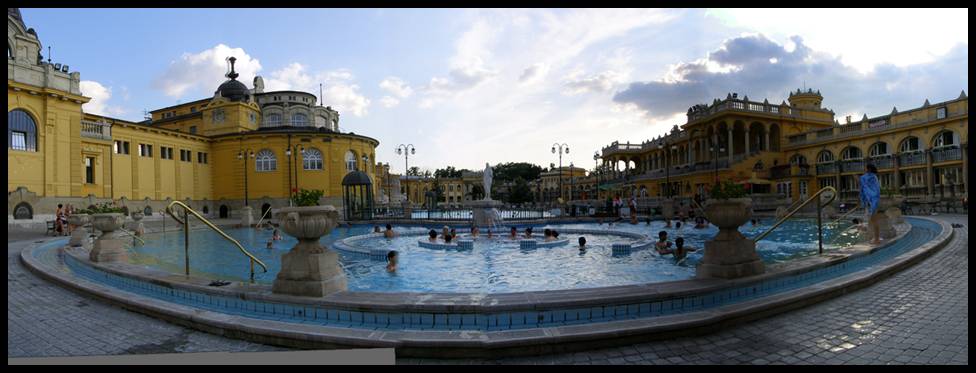
The grand Hungarian baths! This place had naturally warm pools stretching all
the way back to the end, and the structure on the left was filled with all
sorts of different baths/pools/spas. The structure on the right had lots of
stuff too like massage. Very luxurious.

Enjoying the massagey jets from the fountain.
 
They randomly turned on and off jets from all over the pools, and people
gradually filled in where all the jets were.

I can be seen here whispering in Hungarian at the guy to take the queen with
his knight.
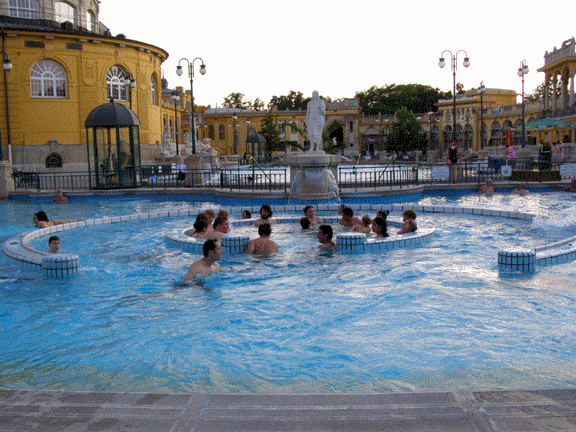
This was super fun. The jets were really powerful and swished everyone around
in circles.
 
Afterwards we went to a really nice all-you-can-eat restaurant, which was
great to sample everything. [Left] Shelly plays with the carbonated water
dispenser. [Right] One of many birthday celebrations that evening.

Picture of Chabad for Carmel’s
dad.

This Jewish synagogue was the largest we had ever seen, and I think 2nd
largest in the world behind one in NYC. It’s incredible that such an
amazing Jewish structure would last WWII, given that Hungary was a
Hitler ally. Upon further inquiry, it seems that Hungary wasn’t really
anti-Semitic (Hitler actually got mad at Hungary for not killing any Jews so
eventually put his people in charge to start the shipping to the
concentration camps), but only joined Hitler because it had to pick a side,
and they didn’t really want to get invaded by Hitler. In fact, they
really just wanted to stay out of WWII because they were still recovering
from picking the wrong side in WWI. Clearly, do not ask a Hungarian to pick
your lotto numbers for you.

A memorial to the top Hungarians who snuck Jews out of the country. The
people on this list constitute the ones that influenced at least a thousand
people.

Holocaust memorial. The metal forms the shape of a tree, with each branch
extension attached to a number of leaves that were placards of names of
people who died in the war. Overall it looks like an upside down menorah.

A cool thing in the adjacent museum. This guy’s clothing, and in fact
all the texture fill-in on the shapes, consists of Hebrew script. I took this
pic looking through a magnifying glass.

Really grand interior. The rabbis actually stand on those raised pulpits on
either side for better acoustics. The women are separated and sit on the
middle and top balconies.

Women can sit wherever they want when there’s no service.

Another view of the interior.
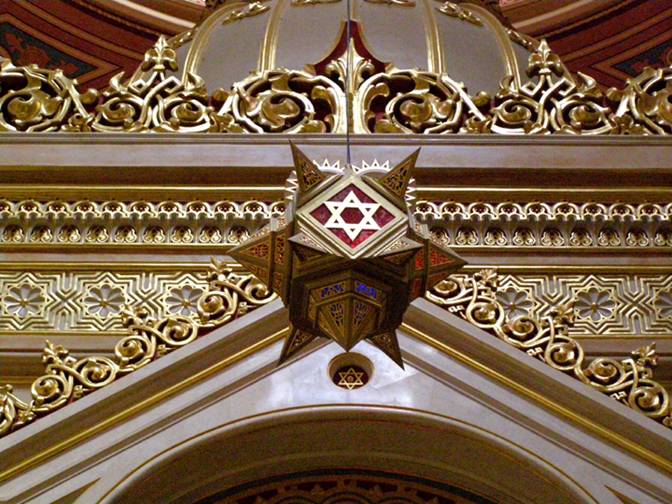
Everlasting light.

A quick afternoon snack.
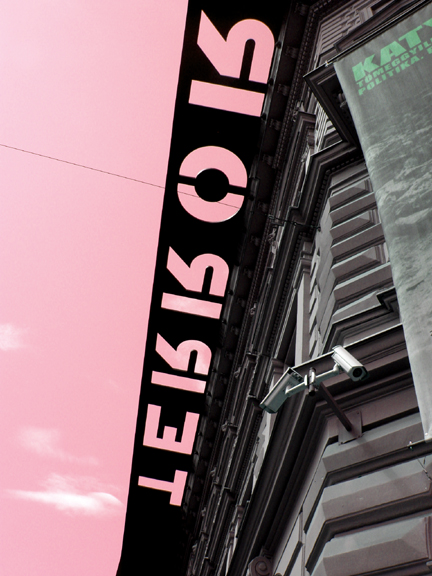
With a few remaining hours to spare, we decided to check out the House of
Terror, which we had heard about a few times. It is a controversial place, as
it was the headquarters of the Nazis during WWII, then again by the Soviets
during occupation. It has an ominous sign that says Terror, which, when the
light is right, beams Terror onto the sidewalk below.
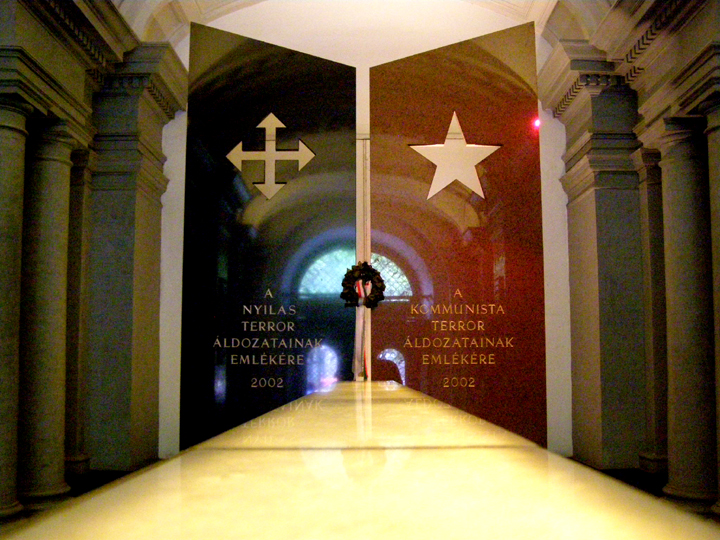
Two evil occupying forces: the Nazis and the Soviets.
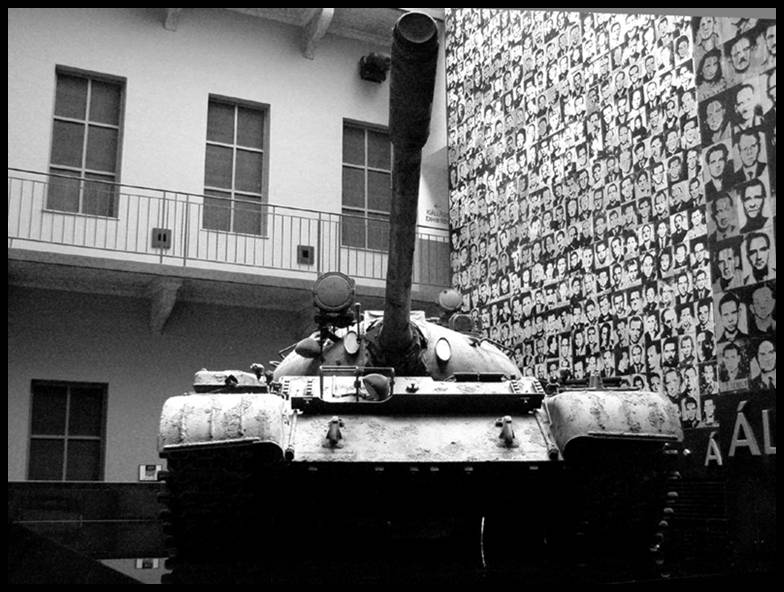
This was definitely the most impressive museum I’ve ever been to
(seconded by the one in Poland).
A couple of stories I remember from the museum: First, was a story told by a
guy who was with his fellow Hungarians on a front in the streets against the
Soviets, who were protected by a tank like this one. The Hungarians were
completely locked down, as any movement caused the tank to rotate and blast
anything in its path. One Hungarian was running around the back looking for a
grenade and any fallen Russians. Eventually, he ran at the tank dressed in
Russian clothing screaming in Russian, “Let me in! Let me in!”
They let him in the tank, and a few seconds later the grenade detonated, thus
destroying the tank and himself, to save his fellow Hungarians. This man was
remembered as a hero of the street. The second story I remember was told by
an old man standing next to his best friend. He described the concentration
camps the two were put in, namely a mine where people were dying all the time
due to lack of food. One day, as things were getting desperate, his friend
went to sneak for some food, but was caught. The guy telling the story was
distraught and went looking for his friend. Finally, he found his friend behind
bars. He asked his friend if he was okay and what happened, but his friend
didn’t say anything. He kept asking his friend to say something.
Finally, his friend leaned into the bars, grabbed and pulled him forward, and
surprisingly kissed him on the lips in front of the guards. In the
friend’s mouth was bread, and the bread was transferred to the
guy’s mouth via the kiss. This bit of bread saved him from starvation,
and the two eventually survived to be old men. The guy was barely able to finish
the story before breaking out in tears and hugging his best friend.
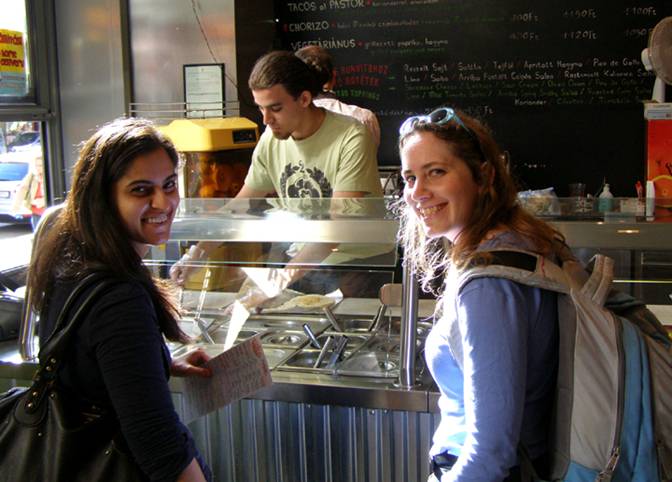
To end on a lighter note: on our way to the airport, we decided to stop at
this burrito place that we had been eyeing the whole time. We found out that
it is owned by an American ex-pat, and is heavily frequented by lots of
American ex-pats and tourists. It was really good.
|